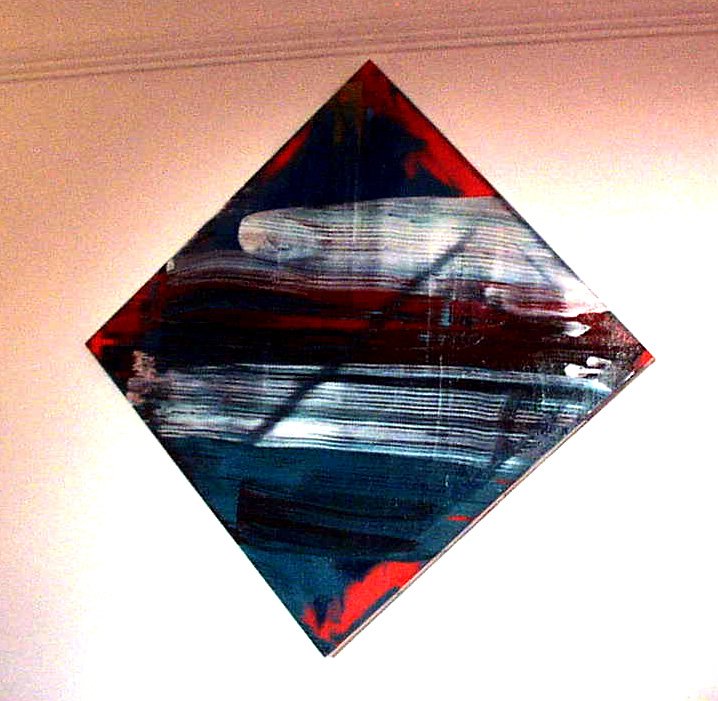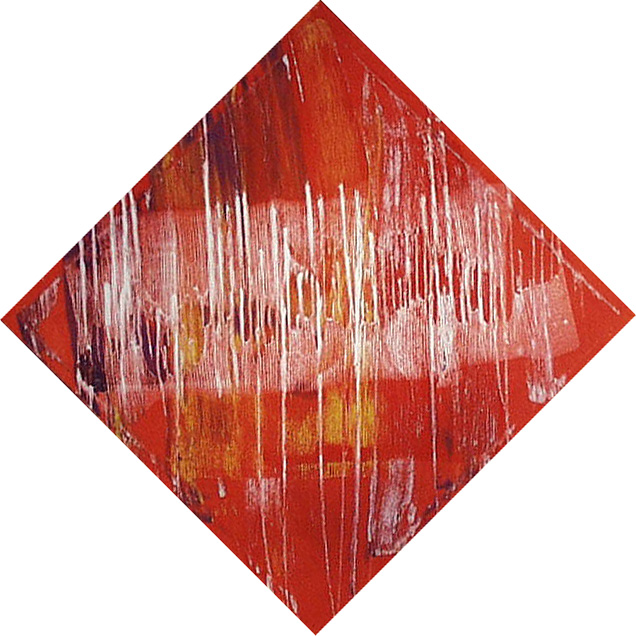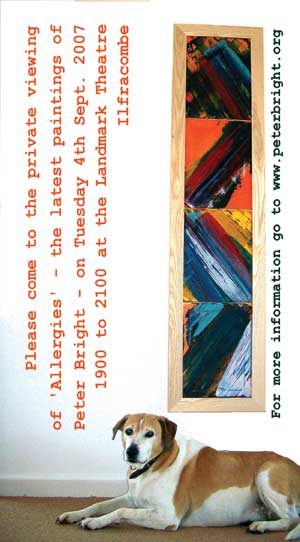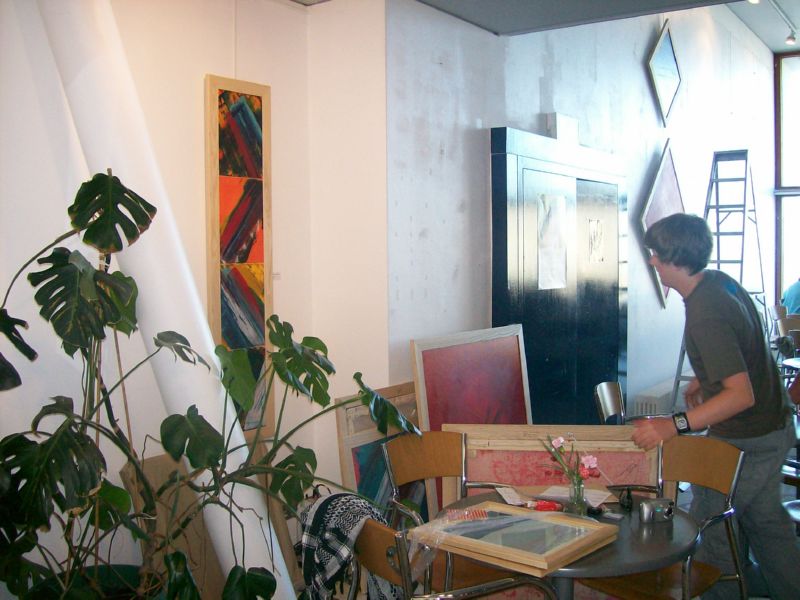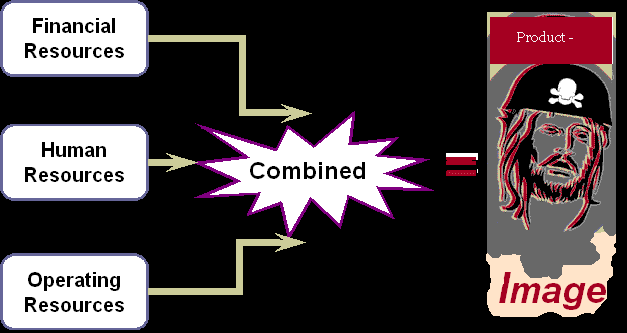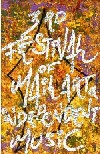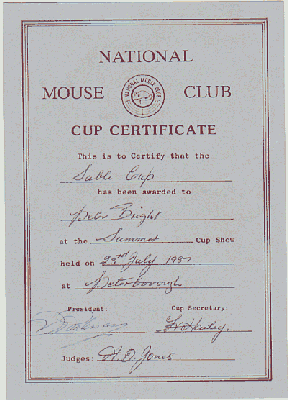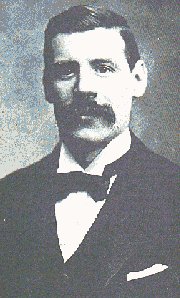|
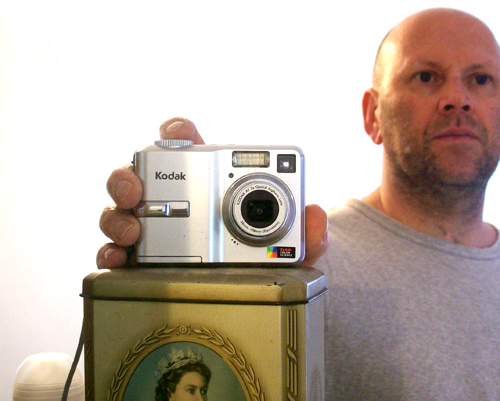
The Obscure Jude (Download)A chance to download the 18 tracks of this 2007 release! BBC online. September 2005 - a fresh look back at the early days as guitarist with 'Finish The Story'. Click Here Peter Bright - BBC Radio 30th September 2005 Finish The Story - Friday Session interview . (2 mins 42 secs. Realplayer.) Music Reviews This Window
Buy 'Jig-Saw Man' Here My Solo Releases 'The Road to Finish The Story' a personal view by P.Bright (pdf file) 'Ménage á trois?' an intimate view by P.Bright (pdf file) Recording 'Doorways' the beginning and the end. (Why I walked off stage) An Internet conversation between Peter and Garry (pdf file) Peter Bright's History - a BBC Online article from Friday 7th January 2000, (18:41 GMT)
Comments on MySpace.com Mark Wakefield & Peter Bright BBC TV - InMemoryOf.co.uk - 2000 (Realplayer.)
Blogroll
|

Napalm Exmoor National Park My solo exhibition Allergy at The Landmark Theatre, Ilfracombe, North Devon, UK, was between 3rd September 2007 – 7th October 2007 (Oil paint on canvas - see image above - sold) This painting is no longer at the Landmark Theatre it is now in a private collection. The seventh (landscape) painting is four canvases stuck together – the title is self explanatory. If this happened maybe a real regeneration of the Exmoor/North Devon economy could happen. Napalm - a highly flammable jelly, produced by mixing a thickening agent with petrol, and used in flamethrowers and fire bombs. Exmoor National Park - designated park area in south-western England, established in 1954. It occupies 693 sq km (267 sq mi). Regeneration - in biology, the ability of a living organism to regrow a portion of its body that has been injured or lost. Plants may regenerate… All of the thirteen paintings sold.
Words taken out of context lose their meaning. Publishing documents that contain controversial language puts the author at risk. Any constructed environment can promote alienation, but it can also enhance communication to form a quasi-organic platform for human interaction. The fact that most of us have an on-line persona suggests that computer communication enables us to visit places and have discussions with people we would normally avoid. We are engaging in the pseudo-anonymous system/society. Underground activities have migrated out of analogue media (the printed word, film etc.) into 'this world'. This world has evolved into a global system with multiple layers in which new authorities compete to control its uses; platform wars, chip races, and operating system alliances. The pseudo-identity of the user is being exposed; law is punishing non-conformity, censorship and the rules of globalization have invaded the system. The Klondike Spirit has taken over the open system and turned it into the homogenized high street we all know. (A non-homogeneous system, whose terms and relationships are not constant, allows language to break up, to stumble over the rules of its grammar, by necessity it has to respond radically to other linguistic components, creating a new linguistic order and syntax. ) The Genetics of Painting?
|
||||||||||||||||||||
|---|---|---|---|---|---|---|---|---|---|---|---|---|---|---|---|---|---|---|---|---|---|
|
My career has been split into two camps - Art & Business. I am a graduate from Exeter College of Art and Design ( I have also studied at Wolverhampton and Bristol Universities) and have exhibited (paintings and prints) and performed music. I am also a successful businessman. The dichotomy created by these two diverse vocations (Art & Business)split me in two: as an artist/musician I had great difficulty in adapting to conventional business practices - it was too structured, prescriptive and extremely dull. I then began to look at my business as a 'work of art' and adapted art methodologies to fit the business scenario. I began to 'think into the box' and my maverick attitude proved successful in turning a floundering business into a formidable enterprise and my position and integrity as an artist/musician remained intact.  Download free memorial designs Download free memorial designs'Often artists' groups have a core of members who initiate activities and support the rest of the group.' Not only is it important to support new groups, it is important for these founding members to fully understand the structures and reasons for creating new groups. They must be asked 'Why are you doing this?' and 'Are there other groups around that already fulfill your needs and aims?' Creating new artist groups/collectives could be counterproductive and create an even more fragmented environment. It is important that a robust armature is created for a network to succeed. If this is achieved then it would be a formidable and powerful organization. My skills are at the 'start up' phase of businesses and organizations, where the creativity of the entrepreneur or group is at its most inventive and vulnerable. I find the energy that is created very infectious but I know that this enthusiasm gradually dies and needs 'mothering' to take it to the next growth phase. To achieve sustainability is key, and I have wide and varied experience of achieving this both in a traditional business environment and in pioneering innovations. A mentoring scheme which enables artists and crafts people to access strategies and processes needed to create successful art and business practice would be highly beneficial to individuals and groups.
I've found a different mix of 'Don't Think I Can Make It' (download here) which appeared on M4tr's 'Sampler#05'. You can get the CD from: Stretch Records 'This Window' test track. This is a sketch of an idea I'm working on called 'This is For You'(Aug 06) This mp3 is 3.07 MB
Waiting for inspiration (2006) Click here to return to the intro Click here for more details of images
|
(aka:This Window) Appearance at 3rd Festival of Mail Art & Independent Music - Live in 1990 at OJC Clichee in Sint-Niklaas. Mastered & "covered" by Oblivion.
|
||||||||||||||||||||
|
|
||||||||||||||||||||
|
|
|
|
|||||||||||||||||||
|
Fish can kill me. When I was very small (maybe 3 or 4 years old) my grandfather, who lost the sight of one eye from a bullet fired by a German sniper (fortunately not a very good one) during the Battle of the Somme in World War 1, wiped my face with the corner of his apron, an apron he had used to wipe his filleting knife on. He was a grocery shopkeeper who specialized in wet fish. I can remember the instantaneous pain and swelling in my eyes, the panic-driven breathlessness, the weeping blindness. The shouting, the accusations, my parent's panic. My poor grandfather was only trying to clean the face of his grubby grandson. My parents were in fear of loosing their only child, the one who was given hours to live a few years earlier……saved by a young doctor who refused to let my parents watch me die and insisted I had a tracheotomy……..thirty or so years later the doctor was knighted and became Sir Michael……Now I have children of my own. |
|||||||||||||||||||||
| |
|
|
|
|
|
|



